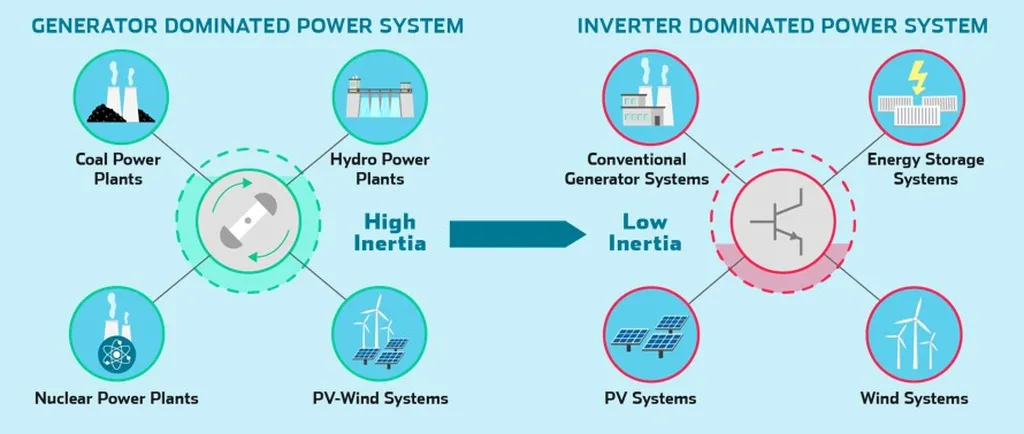In the rapidly evolving energy landscape, understanding the dynamics of power grid stability is crucial. A team of researchers from the University of Tennessee, Knoxville, led by Saurav Dulal, Mohammed M. Olama, Ali R. Ekti, Nils M. Stenvig, and Yilu Liu, has delved into the intricacies of grid inertia within the California Independent System Operator (CAISO) region. Their work, published in the IEEE Transactions on Power Systems, offers valuable insights into the challenges and solutions associated with integrating renewable energy sources into the grid.
The researchers focused on the shift from traditional synchronous generators to inverter-based resources, such as solar and wind power, which has led to an uneven distribution of power system inertia across the grid. Inertia is the grid’s ability to maintain stable frequency during disturbances, and its decline can result in higher rates of change of frequency (RoCoF), potentially compromising grid reliability. Using data from the Frequency Monitoring Network (FNET/GridEye) spanning from 2013 to 2024, the team analyzed real disturbance events to estimate grid inertia and identify regional trends.
Their findings revealed significant variations in regional inertia and frequency dynamics. Some regions within CAISO experienced RoCoF values up to six times higher than the interconnection-wide averages, particularly during periods of declining inertia. This variability was closely linked to the increasing penetration of renewable generation and the evolving duck curve, a term describing the pattern of electricity demand and supply throughout the day in regions with high renewable penetration.
The study also highlighted a recent recovery in inertia levels, attributed to the deployment of battery energy storage systems equipped with synthetic inertia capabilities. These systems can mimic the behavior of traditional generators, providing necessary inertia to stabilize the grid. The researchers emphasized the importance of regional inertia monitoring, strategic resource planning, and adaptive operational practices to ensure grid reliability as renewable energy integration continues to grow.
For the energy industry, these insights underscore the need for advanced monitoring tools and strategies to manage the dynamic nature of modern power grids. By understanding and addressing regional inertia challenges, grid operators can better integrate renewable resources, enhance system stability, and support the transition to a more sustainable energy future. The practical applications of this research extend to grid planning, operational practices, and the development of new technologies aimed at maintaining grid reliability in the face of evolving energy landscapes.
This article is based on research available at arXiv.

